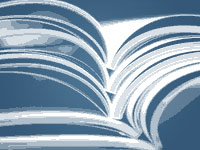Research
A partial list of ongoing research projects:
1. Framed combinatorial topology. (joint with Christoph Dorn)
Preliminary versions of our manuscript introducing framed combinatorial topology, and a subsequent monograph defining manifold diagrams, are available here.
2. Fusion 2-categories. (joint with David Reutter)
Our memoir introducing fusion 2-categories is available here.
A partial list of past research projects:
1. The topology and algebra of fusion categories. (joint with Chris Schommer-Pries and Noah Snyder)
Fusion categories are the natural categorical analogs of finite groups. This project elucidates algebraic structures on fusion categories by translating them into intuitive topological structures on field theories. We have proved that fusion categories are dualizable objects of the 3-category of tensor categories, and therefore have associated 3-dimensional Turaev-Viro-type local field theories. Given this framework, we can identify, for example, the pivotality of the fusion category as corresponding to the spin-independence of the associated field theory.
The primary paper from this project, “Dualizable tensor categories”, is available, as is the prequel paper “The balanced tensor product of module categories”; a sequel paper is (indefinitely) in preparation.
2. The geometry of elliptic cohomology. (joint with André Henriques)
Inspired by the programs of Graeme Segal and of Stephan Stolz and Peter Teichner, the aim of this project is to construct a geometric model for elliptic cohomology based on spaces of 2-dimensional quantum field theories. Our approach relies on the idea of defects between conformal field theories developed in the above project with Arthur Bartels. We anticipate that, roughly speaking, the space of defects between the free fermions and the vacuum will be a classifying space for topological modular forms, a universal form of elliptic cohomology. Fundamental classes for topological modular forms are controlled by the String group, and we have proven that defects from the free fermions do provide a geometric model for String structures.
A survey of this program (“Topological modular forms and conformal nets”) is available and the paper on “Geometric string structures” is (indefinitely) in preparation.
3. Conformal nets and local field theory. (joint with Arthur Bartels and André Henriques)
Conformal nets are a mathematical model for 2-dimensional conformal field theories. In this project, we developed a new notion of a `defect’ morphism between conformal field theories, based on the idea of phase transitions in statistical mechanical systems. Leveraging this notion of defect, we proved that conformal nets satisfying certain finiteness conditions are dualizable, and thus provide 3-dimensional local Chern-Simons field theories.
The first three papers from this project, about “Dualizability and index of subfactors”, “Internal bicategories”, and the announcement “Conformal nets and local field theory”, along with the five papers of our core series, “Conformal nets I: coordinate-free nets”, “Conformal nets II: conformal blocks”, “Conformal nets III: fusion of defects”, “Conformal nets IV: the 3-category”, and “Conformal nets V: dualizability” are available here.
4. Cornered Heegaard Floer homology. (joint with Robert Lipshitz and Ciprian Manolescu)
Heegaard Floer homology provides subtle invariants of 3-manifolds. Bordered Heegaard Floer homology, developed by Lipshitz, Ozsváth, and Thurston, gives a method for reconstructing HF invariants from invariants of 3-manifolds with boundary. In this project, we developed a notion of 2-dimensional algebra suitable for studying HF invariants of 3-manifolds with codimension-2 corners, and proved decomposition results for the bordered HF invariants of surfaces and of 3-manifolds with boundary.
The first paper (“On the algebra of cornered Floer homology”), describing 2-algebras and the Heegaard Floer invariant of a surface with boundary, and the second (“Cornered Heegaard Floer homology”), constructing the Heegaard Floer invariant for a 3-manifold with corners, are both available here.
5. Fusion rings of loop group representations and twisted K-theory.
In this project, we completely computed the twisted K-theory and twisted equivariant K-theory of all simply connected, simple Lie groups. In the equivariant case, this provided an explicit finite presentation of the fusion rings of loop groups.
The three papers (“Fusion rings of loop group representations”, “On the structure of the fusion ideal”, and “On the twisted K-homology of simple Lie groups”) are available here.
6. Higher topological cyclic homology. (joint with Gunnar Carlsson and Bjørn Dundas)
We investigated higher topological cyclic homology as an approach to studying chromatic phenomena in homotopy theory. Higher topological cyclic homology is a computationally tractable cousin of n-fold iterated algebraic K-theory. As part of this project, we were able to compute the higher topological Frobenius homology of the sphere spectrum, and thereby to prove the Segal conjecture for tori.
The paper “Higher topological cyclic homology and the Segal conjecture for tori” is available here.
